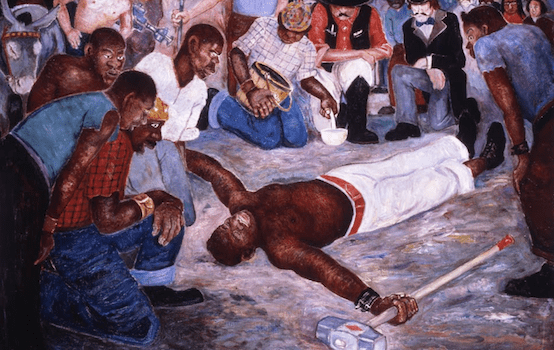A Little American Myth-Making Never Hurt Anyone

Throughout time and place, people have understood themselves and the world around them through stories that have meaning beyond the events described in the narrative itself.
From Gilgamesh, Odysseus, Aeneas, and Hercules, to Sinbad, King Arthur, and Thor, heroes have served an important role in embodying cultural ideals, and no figure better embodies American mythology and ideals than our nation’s first President.
Standing six foot three, an especially commanding height in his day, George Washington was the stuff of legend. His first biographer, Mason Locke “Parson” Weems, claimed Washington was the personification of virtue: “It is hardly an exaggeration to say that Washington was pious as Numa; just as Aristides; temperate as Epictetus; patriotic as Regulus…to liberty as firm as Cato; as respectful to the laws as Socrates.”
The Washington stories with which we are all familiar are important because they illuminate our understanding of America’s origin story; they bind us together as citizens and infuse our everyday lives with inspirational values.
Take the miraculous story of Washington at the Battle of the Monongahela on July 9, 1755: Washington saw horses shot out from under him and four bullets pierce his jacket, but nevertheless stood bold against the French. The scene reinforces our view that America was founded, and stands today, by divine providence.
Or consider the most famous Washington tale, of the future president chopping down his father’s cherry tree and coming clean about his misdeed—I cannot tell a lie, Pa. This story enhances our belief that Washington’s private virtue led to his public success, and it fortifies our exaltation of virtue alone as being the basis of achievement in America.
But what do we do when we learn that beloved myths aren’t true—like the story of the cherry tree? Weems, in his attempt to capture the public imagination about Washington’s life and character, fabricated the tree story, and many others, because in his view the legend’s inspirational effect was more important than the historical accuracy. These stories, true or not, endure today because they encapsulate our common perception of virtue and the good.
The veracity of stories from our past matters less than their significance for what they tell us about ourselves, our values, and about American identity today.
The legend of John Henry, the African-American folk hero, tells the tale of superhuman strength racing against a steam-powered rock drilling machine. Henry won, but tragically died from exertion. This story demonstrates the American ideal of man’s prowess and intellect overcoming both nature and technology.
Paul Bunyan, the giant lumberjack, is classic American etiology—his life and acts help explain why things are the way they are. For example, folklore says that the giant’s footprints created the 10,000 lakes of Minnesota. According to other legends, Bunyan created the Grand Canyon by dragging his axe behind him, and created and Mount Hood by lighting stones on his campfire.
What matters about these stories is not their historical accuracy, but that they help us understand ourselves. As C.S. Lewis observed in The Four Loves, “it is possible to be strengthened by the image of the past without being either deceived or puffed up. The image becomes dangerous in the precise degree to which it is mistaken, or substituted, for serious and systematic historical study. The stories are best when they are handed on and accepted as stories.”
For that reason, a local art and rare books exhibit in Indianapolis is attempting to revive the traditions of art-as-storytelling and history-as-moral-instruction. The Harrison Center—in Partnership with The Sagamore Institute, an Indianapolis-based think tank, and the Remnant Trust rare books collection—opens The Beauty of Front Porch Citizenry this July.
In pairing classic, rare works on citizenship with portraits of individuals from America’s and Indiana’s past, the aim is to revive a shared sense of American identity. In addition to hosting hundreds of high school students at the exhibit, the Harrison Center will also present a series of public events aiming to spark a new conversation on the rights and responsibilities of American citizens. In celebrating, immortalizing, and learning from heroes of the past, The Beauty of Front Porch Citizenry wants to help Americans renew a shared identity that is honest about our less-than-inclusive past, but remains doggedly optimistic about the possibility of living up to our national ideals of liberty and equality.
When recalling our national myths, we ought to emphasize, as C.S. Lewis suggested, “the tale as such, on the picture which fires the imagination, the example that strengthens the will,” and avoid “the perfectly serious indoctrination of the young in knowably false or biased history—the heroic legend drably disguised as text-book fact.”
In crafting stories that inspire us, Weems was in good company, alongside Homer, Virgil, Dante, and Milton. Plumbing our national myths to understand what they tell us about ourselves, and immortalizing our values and heroes in art, may hold the key to a more unified, and beautiful, American future.
Alexandra Hudson is a writer, bibliophile, and former federal civil servant. She lives in the American Midwest, is a research fellow at the American Institute for Economic Research and contributes to The Wall Street Journal, The Washington Examiner, and The Hill. Follow her on Twitter @LexiOHudson.